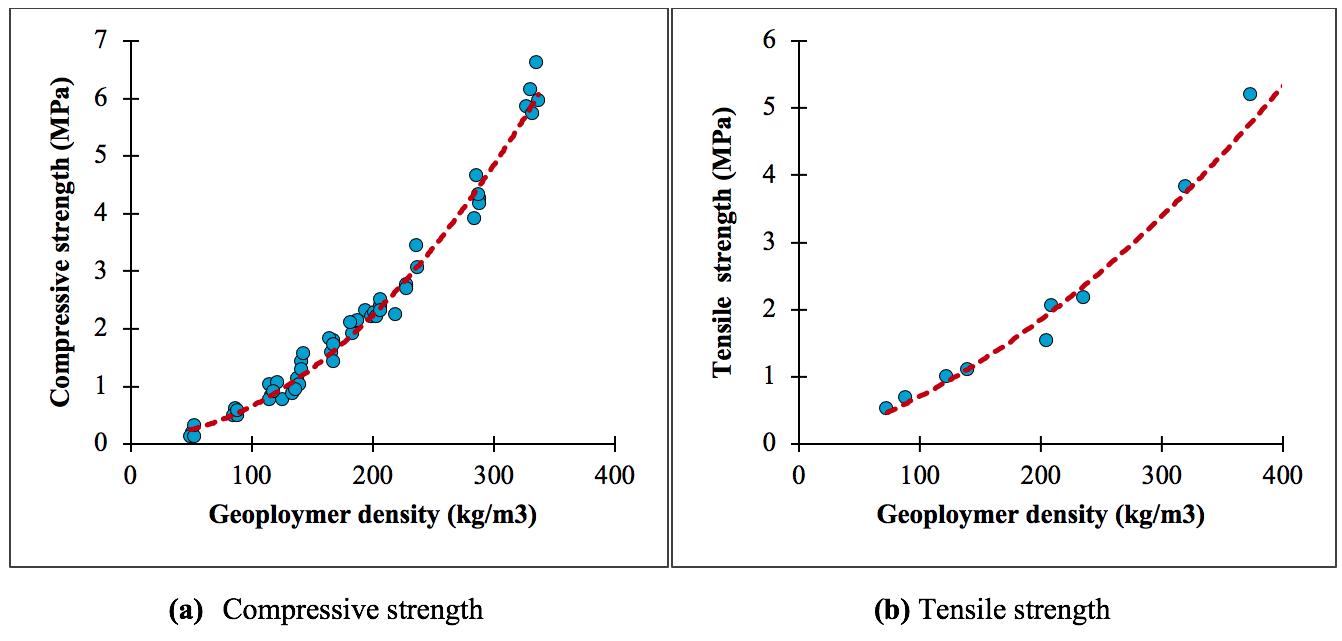
14 minute read
The use of expansive geopolymer injections to stabilise railway formation
by The PWI
AUTHOR: Dr Mohamed Wehbi, BSc, MSc, PhD, CEng, FPWI Technical Director, Geobear Ltd.
Advertisement
Mohamed has recently joined Geobear as their new Technical Director, where he is responsible for technical validation strategies in Geobear and rail business development. He came from Network Rail where he worked as a Senior Design Engineer in the Track Bed Investigation team. His responsibility in that role was to develop Network Rail’s in-house track bed modelling capabilities. Mohamed has a PhD in Civil Engineering from the University of Birmingham, he is also a Chartered Engineer (CEng) and a Fellow member of the Permanent Way Institution.
INTRODUCTION
The railway track is considered a structural system which is designed to withstand the combined effects of traffic and the environment so that the subgrade is adequately protected (Burrow et al., 2017). To achieve this, the thickness of the ballast and subballast or slab track are designed to ensure that the stresses from trains dynamic loading are reduced to acceptable levels.
Using engineering principles and ground investigation information, designers are generally successful in providing robust designs that can achieve this requirement. However, this may not always be the case mainly due to the short comings of the ground investigation and the presence of unforeseen (eg soft spots), or changing ground (eg change in water content), conditions. As a result of this the railway tracks are likely to under-perform with reduced life span, increased maintenance interventions and potentially requiring speed restrictions. To address this issue adequately engineers resort to full track reconstruction with deep excavations, which can be expensive and disruptive to the network. There is a limited amount of research that has been carried out to develop cost-effective solutions that can be used, in-situ, without the need for full reconstruction with deeper excavation.
In the late ‘80s engineers were experimenting with the use of geopolymer injections to stabilise building foundations suffering from subsidence. Since then, this technology has evolved significantly and became widely used in various construction industries such as roads and airfields. Geopolymer injections have been used, with great success, to stabilise road and airfield pavements suffering from soft underlying conditions and eroded sub-base layer. With 40 years of experience Geobear, (formerly known as URETEK), has been at the forefront of this technology and has developed various proprietary geopolymer types that allow for more optimised design solutions for various site problems.
As is the case with many other geosynthetic technologies, that were originally developed for the road industry and eventually adopted on the railways, geopolymer injection also has many potential uses on the railways. This technology can provide cost-effective in-situ solutions to difficult railway formation problems with minimal
disturbance to the network. Therefore, the aim of this paper is to better inform the railway industry about the benefits and applications of geopolymer injections technology to treat formation problems. The paper will also explore a case study from an existing UK site where geopolymer injections have been used successfully on the railways.
Geopolymers are expandable resins that can be injected into the ground at high pressure using special injection equipment for the purpose of void filling and soil stabilisation. Geopolymers have unique and excellent engineering properties compared to other conventional construction materials which make them ideal for sustainable construction, such as the following:
• Rapid hardening: unlike conventional grouting, geopolymers have a hardening time typically less than a minute, which means that the geopolymers benefits will be realised instantaneously. It should also be noted that depending on the geopolymer mixture, the hardening time can be varied to accommodate the requirements of different designs and applications.
• Lightweight material: geopolymers can be injected with different final densities. Typically, geopolymers can have a density that ranges between 150kg/m3 to 300kg/m3, which is almost 10 and 5 times lighter than typical concrete and grout, respectively.
• High compressive and tensile strength: depending on the selected geopolymer design density, the unconfined compressive strength can be specified. Higher geopolymer density will result in a higher compressive strength. Compressive testing carried out by Padua University in Italy (Dominijanni and Manassero, 2014) has shown that there is an exponential relationship between the geopolymer density and the compressive strength. The strength can reach to up to 5MPa (see figure 1a) for geopolymer density of 300kg/m3, which is 30 times higher than typical engineering fills (Burrow et al., 2017). Unlike engineering fills, geopolymers also have good tensile resistance, which is also dependent on resin density, and can reach up to 3MPa for geopolymer density of 300kg/ cm3 (see figure 1b)
• Controlled modulus of stiffness: according to the laboratory testing at Padua University (Dominijanni and Manassero, 2014), the stiffness modulus of the geopolymer is dependent on the selected design density for the geopolymer, where it can vary from 30MPa to 80MPa for geopolymer density between 150kg/ cm3 and 300kg/cm3, (see figure 2). This can be especially useful to developed optimised designs to achieve the desired level of track stiffness, which is further discussed in the following section.
• High resistance to fatigue damage: fatigue cyclic testing has been carried out on Geobear’s geopolymers in Germany in 2007 (Institut Dr.-Ing. Gauer, 2007), to determine the fatigue characteristics of its geopolymers. The testing showed that the geopolymers have significant ability to resist fatigue damage under cyclic loading due to road and railway traffic. For the purpose of comparison, typical engineering fills (ie Type 1) would have a fatigue life of approximately 70 years under railway traffic of 38EMGTPA, however geopolymers under similar loading conditions will have more than 150 years of fatigue life (see figure 3).
• Water free solution: geopolymers do not require water to initiate the curing and hardening process, and therefore they will not increase in water content in treated soils. In fact, the hardening in geopolymers occurs via an exothermic chemical reaction called polymerisation.
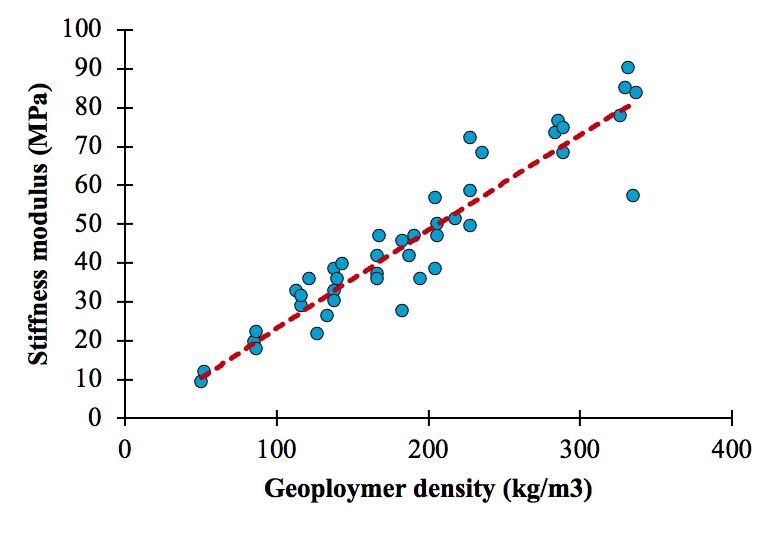
Figure 2: The relationship between geopolymer density and modulus.
• Environmentally friendly material: geopolymers’ molecular structure is very stable and as a result they do not contaminate soils or water tables and are less susceptible to chemical attacks.
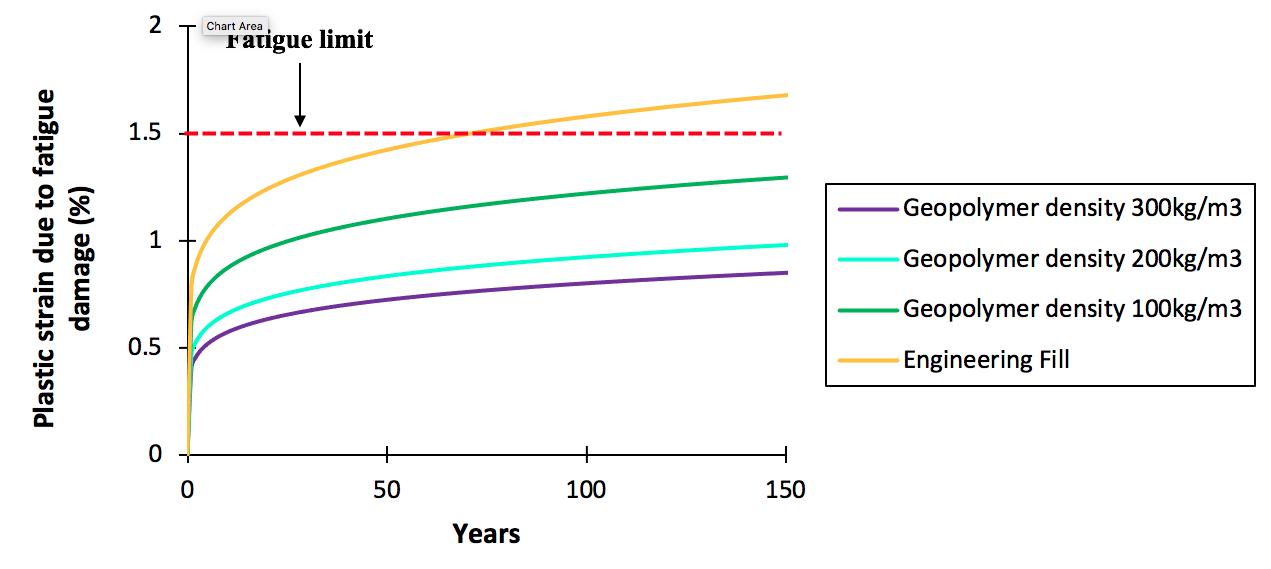
Due to their unique engineering properties and advancement in injection technology, geopolymers can be used in various applications on the railways which will be discussed in the following sub-sections.
VOID FILLING
Geopolymers are ideal for void filling applications under the railways and adjacent structures due to their expanding properties. The injection process is well-controlled and monitored to achieve the desired levels of filling. Voids under the railway can develop due to a variety of reasons, from materials washout to geological composition. For example, under a slab track, voids can form due to sub-base layer being eroded due to poor drainage conditions. As a result, the slab track can develop cracking at the locations of voids leading to high deflections and unmaintainable poor track quality. The locations of the voids under the slab can be identified with an appropriate site investigation, and then injected with geopolymers via a 14mm -16mm diameter nozzle (see figure 4). During the injection process, the track level can be monitored to achieve sufficient lifts for smooth track geometry.
Another example where geopolymers can be used to fill voids under the railway structure is sinkholes. The formation of sinkholes under railways is generally rare, however when they do occur the railway will continuously lose ballast into the sinkhole resulting in poor track geometry and significant safety concerns to the railway operation, particularly in the case of the sinkhole size increasing. Treating this problem with conventional means such as grouting can be difficult and expensive. However, with geopolymers the sinkhole can be injected and filled rapidly as the geopolymer will expand and cure in matters of a few minutes with geopolymer quantities much less than grouting (see figure 5).
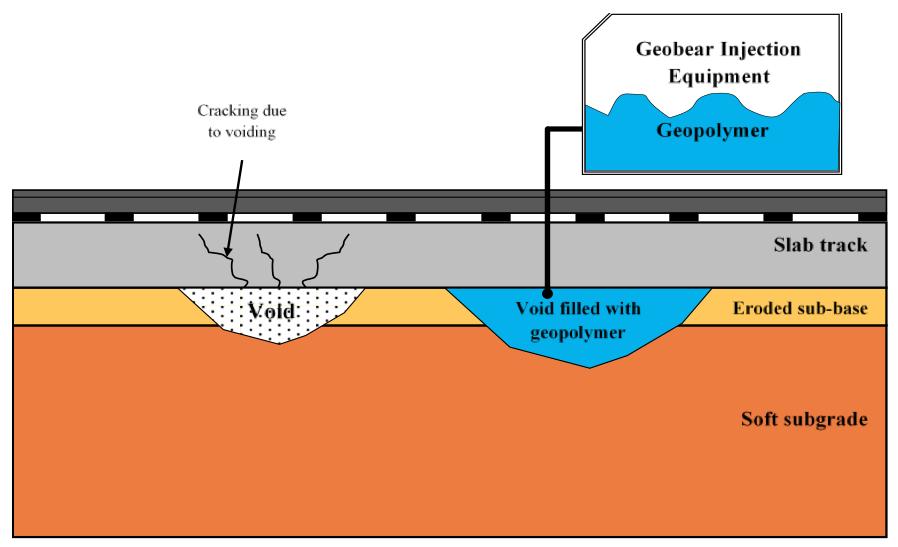
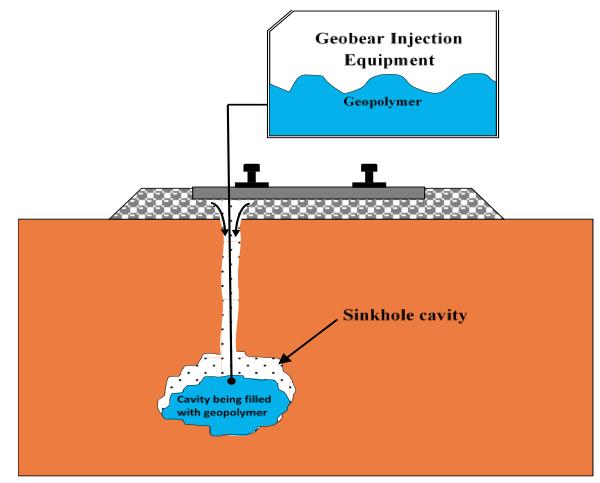
Figure 4: Filling voids under slab track with geopolymer injections. Figure 5: Sinkhole filling with geopolymer.
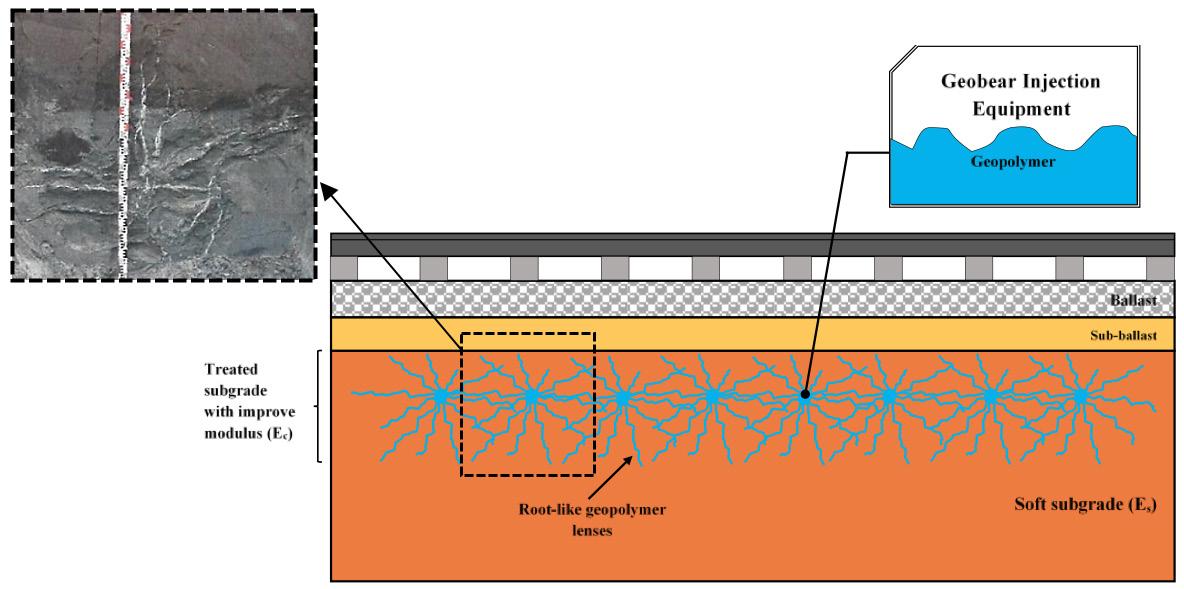
Figure 6: Geopolymer injection to treat railway subgrade. Figure 7: Testing configuration.
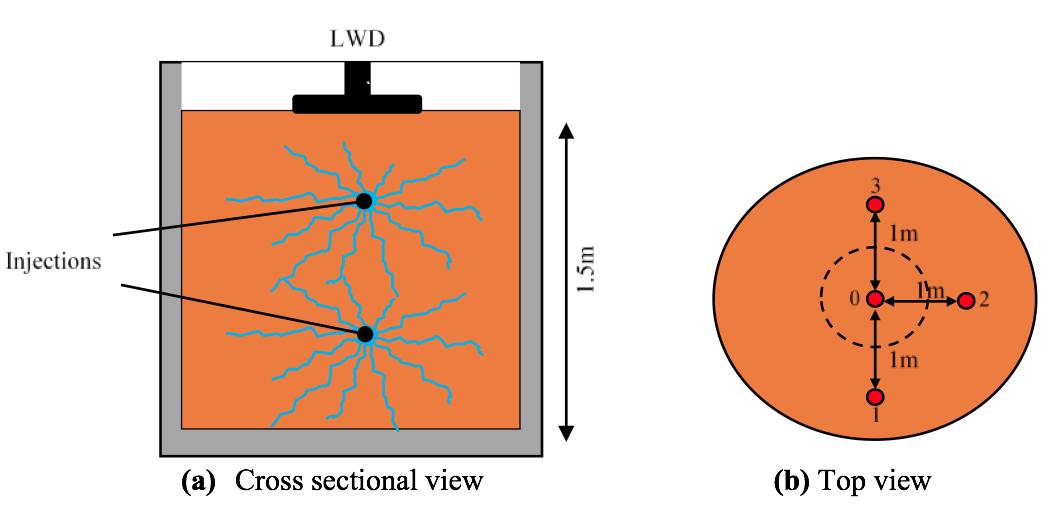
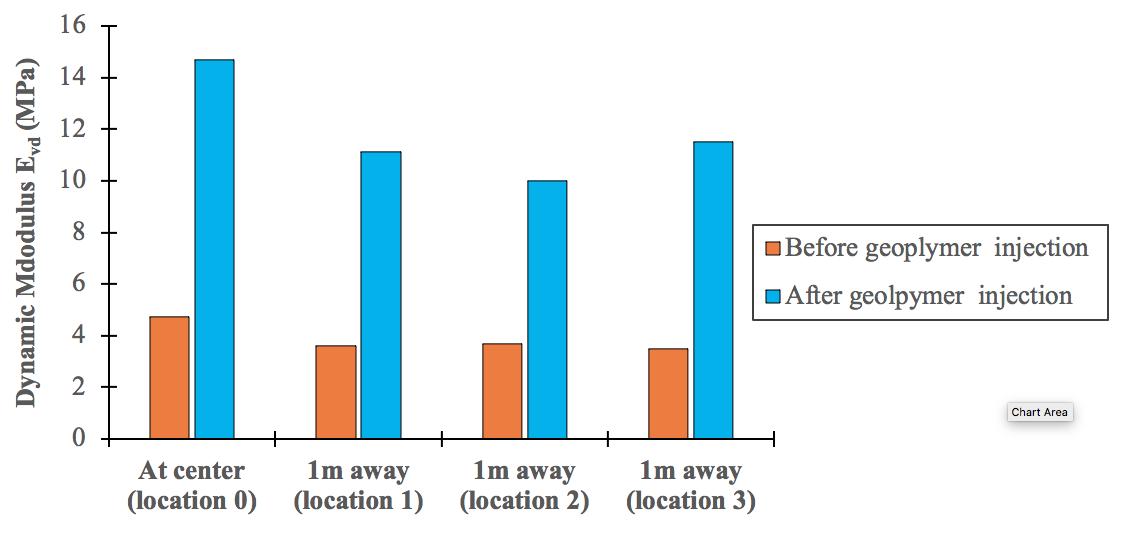
In addition to void filling, geopolymers can also be directly injected into soft clayey subgrades. The injected geopolymer will penetrate and spread into the subgrade, via a phenomenon called Hydraulic Fracturing (Dominijanni and Manassero, 2014), to form root-like lenses which will act like soil reinforcements and improve the soft subgrade load bearing properties (shear strength (Cu) and modulus (Es)). The geopolymer can spread up to 1m away from the injection epicentre in all directions and can be injected directly under the load bearing area as the injection nozzle can be driven in at an angle, as shown in figure 6.
In 2010, the Austrian Institute of Technology (AIT) carried out a series of tests to understand the effect of Geobear geopolymer injections on the soil modulus of stiffness (Niederbrucker, 2010). A large testing pit was filled with soft clayey soil and the dynamic stiffness modulus (Evd) was measured using Light Weight Deflectometer (LWD) before and after the geopolymer injections (see figure 7).
The testing showed that geopolymer injections have improved the soil modulus by approximately a factor of three (improved Evd from 4MPa to 12MPa), as shown in figure 8. Having such improvement on railway subgrades would lead to reduced track settlement, lower rate of track geometry deterioration and reduce tamping frequency. In addition, improving the subgrade modulus would also reduce the track bed design requirements in future renewals. For example, based on Network Rail Track Bed standard (NR/L2/TRK/4239), improving the subgrade modulus from 4MPa to 12MPa would reduce the required track bed thickness in future renewal by approximately 29% and 22% on low speed (<50mph) and higher speed tracks (>50mph), respectively, see table 1. To treat extremely soft soils such as peat, geopolymers can be injected into a geotextile membrane via a 40mm drilling hole. The injected geopolymer then expands and hardens to create a supporting pillar within the peat layer with a diameter of up to 400mm. In railways, these pillars can be used in a similar fashion to micro-piles and can be installed between the sleepers at 800mm below sleeper bottom, to stabilise track beds and embankments (see figure 9). The injected pillars will generate an arching effect that will carry most of the track bed and traffic loads and bypass them from the peat layer to a more competent stiff layer. As a result, these pillars will significantly reduce stresses on the peat, reduce tack settlement and improve track critical velocity.
TRANSITION ZONES
Abrupt variations in track support, such as transitioning to and from a bridge, can lead to significant maintenance problems on the railways especially when trains are travelling at high speeds. These variations can lead to increased dynamic loading, differential settlement, and frequent occurrence of track faults (Bezgin and Wehbi, 2019). To manage these areas, a transition zone is designed to provide a gradual change in track stiffness that would minimise damage and keep dynamic loading at acceptable levels. Designers typically utilise conventional techniques such as granular or concrete wedges to create these transition zones. These techniques require track removal with deep excavation digs, which can undermine nearby structures like bridge abutment walls. Alternatively, geopolymer injections can be used to improve the subgrade modulus and produce an adequate transition zone. Various types of geopolymers with different properties can be injected, in-situ, at various depths to provide a smooth gradual change in subgrade modulus, as shown in figure 10, which in turn will lead to a gradual change in track stiffness.
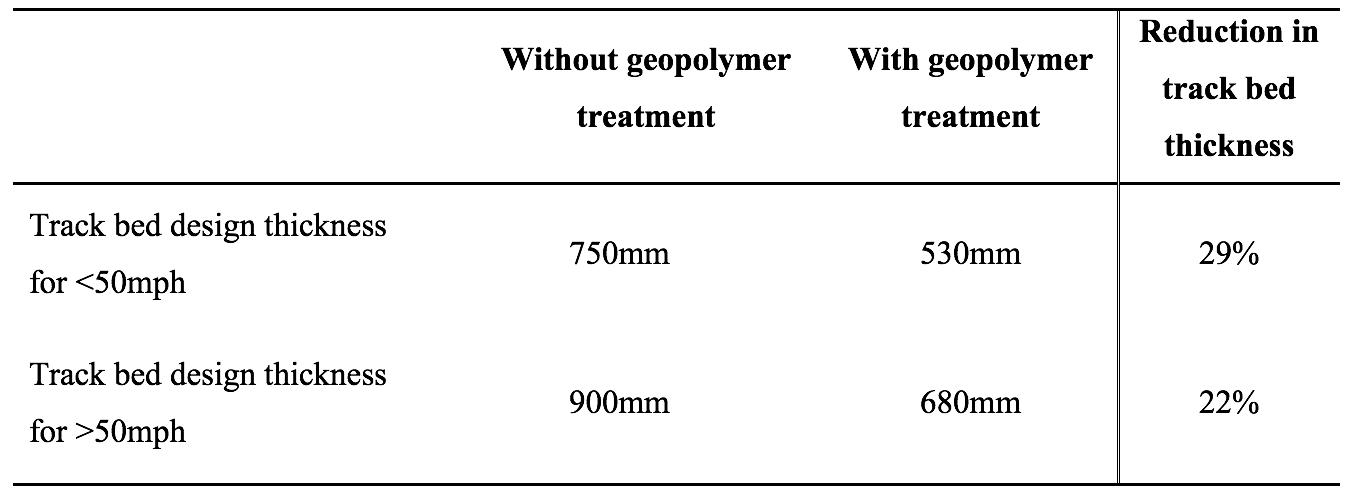
Table 1: The effect of geopolymer on future track bed renewals.
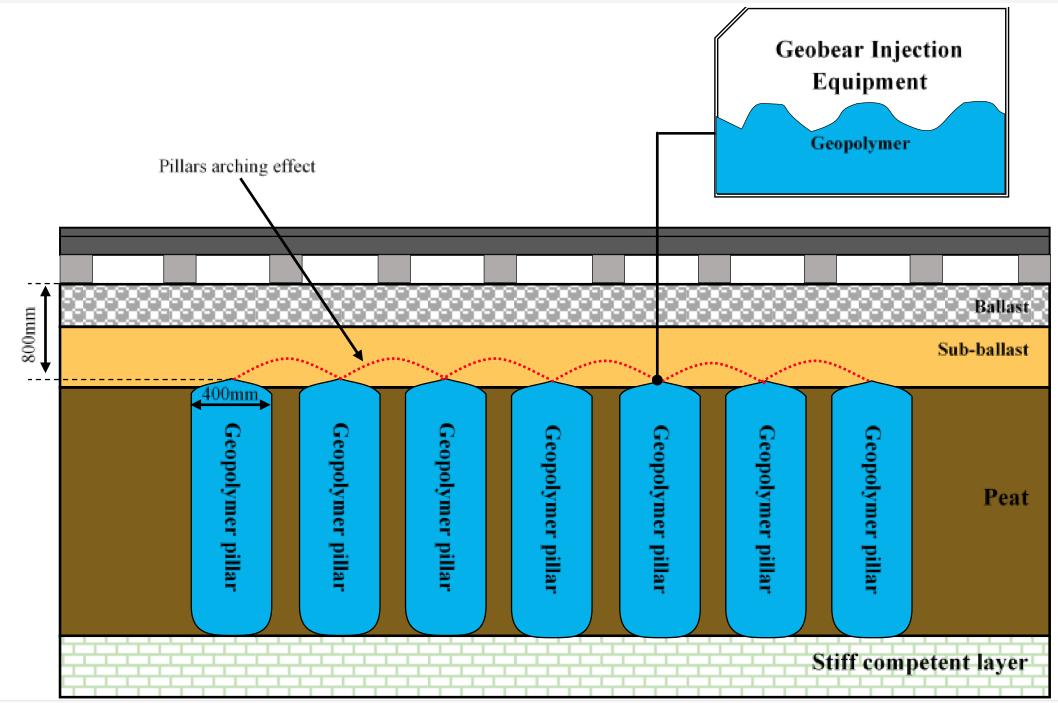
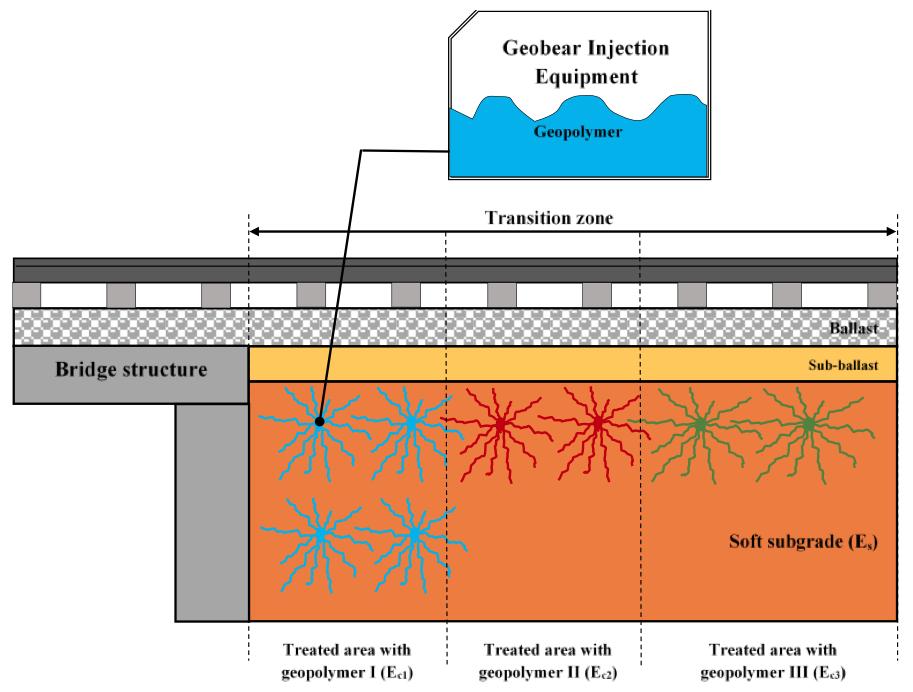
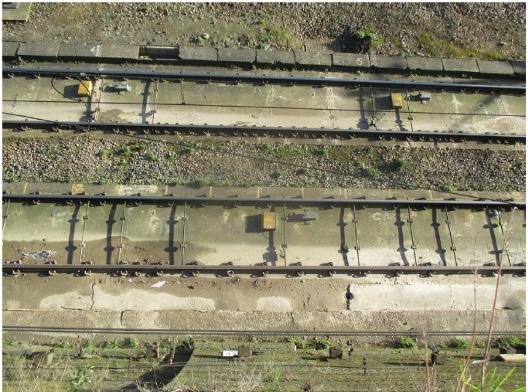
Figure 11: Cracking on Kentish Town slab track.
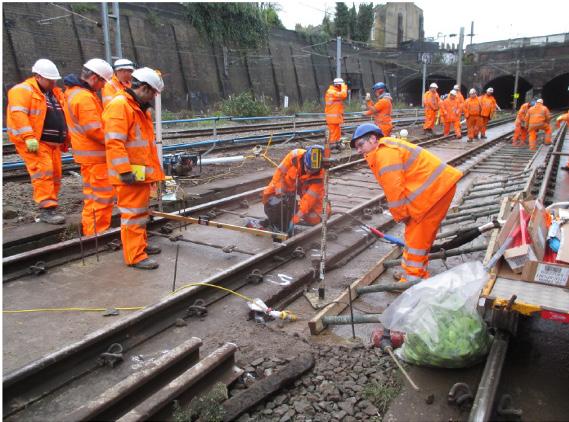
Figure 13: Level monitoring during injection on Kentish Town.
CASE STUDY: KENTISH TOWN SLAB TRACK
Part of the slab track near Kentish Town station on East Midlands route was experiencing rapid deterioration which manifested in concrete slab cracking in numerous locations (see figure 11). The main drive for the deterioration was the soft underlying condition (London Clay, Cu~40kPa), combined with poor drainage. Under train dynamic loading, materials under the slab were also washing out and appearing on cess and 6ft sides of the slab resulting in voiding and separation at the base of the slab. As a result of the slab track poor performance, a 30mph speed restriction was imposed due to the development of various track faults. It should be noted that the poor performance was observed on both Down and Up fast lines.
Geobear was commissioned to carry out temporary stabilisation works using geopolymer injections under the slab track for both and Down and Fast lines. The injection points were in pairs near the rail seating area at 1.5m intervals as shown in the injection plan, (see figure 12), and at a depth of 1.5m below ground level. As the geopolymer is injected under a slab it will start to fill any voids, push away the water, and reinforce the subgrade. To achieve the required geometry tolerances on each line, levels were continuously measured during the injection process as shown in figure 13. It should also be noted that the work was completed within 12 hours.
To ensure that geopolymer stabilisation has provided the desired effect, a high speed camera with Digital Image Correlation (DIC) was used to trace and measure track vertical deflection before and after the injection. Figure 14 shows the deflection measurement for a passenger train before and after the injection. From the figure, it can be observed that the track vertical deflection was significantly reduced by approximately 69% from 6.4mm to 1.98mm placing the deflection measurement post treatment within an acceptable deflection limit. Furthermore, using Beam on Elastic Foundation Figure 12: Geopolymer injection plan.
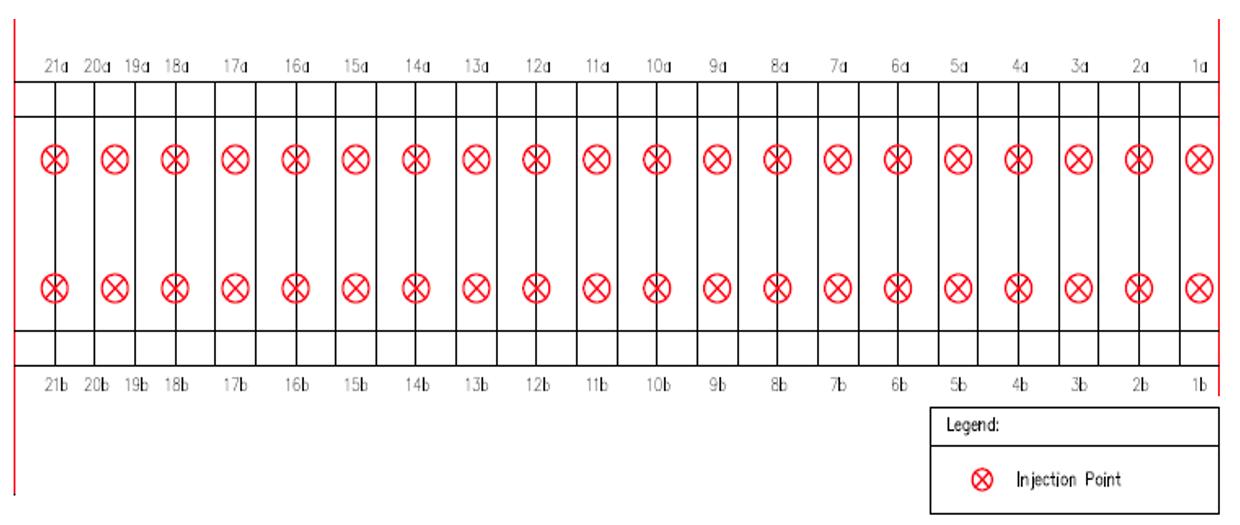
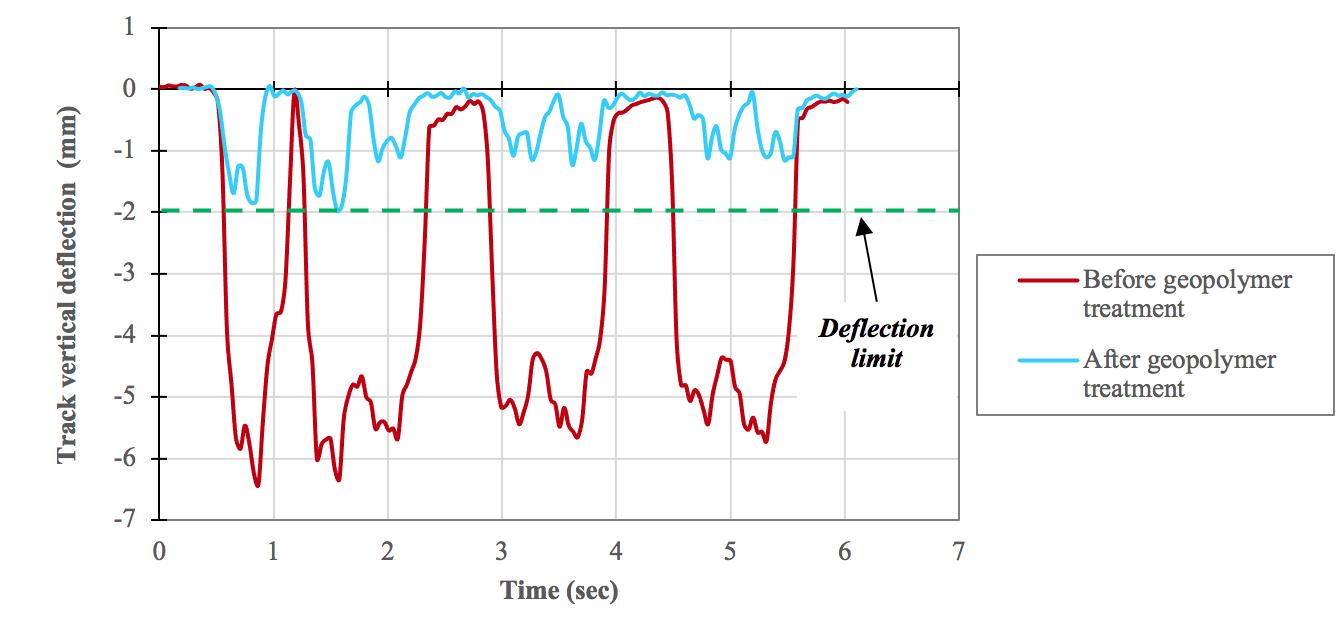
Figure 14: Track deflection in Kentish Town slab track before and after.
(BOEF) theory, back-calculations can be carried out to estimate the effect of deflection reduction on other important engineering parameters as shown in table 2. From table 2 it can be noted that the reduction in deflection would have a positive impact on other engineering parameters such as track stiffness, rail bending stress and track vibrations.
In addition to track deflection monitoring, track geometry measurement from the track recording coach was also assessed to understand the effect of the geopolymer treatment on various track geometry parameters. Table 3 shows a comparison between the various track geometry parameters before and after the geopolymer treatment on the Up Fast line. From the table, it can be observed that there is a significant improvement in track quality across all geometry parameters in the treated area, (highlighted in a dashed box), including reductions in twist and top faults and elimination of dip angle, which significantly reduces the risk of derailments. Similar improvements have also been observed on the Down Fast line.
CONCLUSION
The aim of this paper was to inform the railway industry about the benefits and applications of geopolymer injection technology and its potential applications on the railways to treat formation problems. To this end, the following can be concluded from this paper: 1. Geopolymer injection is a novel technology that has been widely used in various construction industries. 2. Understanding the behaviour and characteristics of geopolymers is essential to fully realise their potentials. 3. There are many applications in the railway sector where geopolymer injection can provide an alternative cost-effective engineering solution to difficult formation problems. 4. As demonstrated in the case study, geopolymer injections have been used on Network Rail infrastructure with great success.

Table 2: Back-calculations using BOEF.
Table 3: The impact of geopolymer treatment on track geometry in Kentish Town slab track.
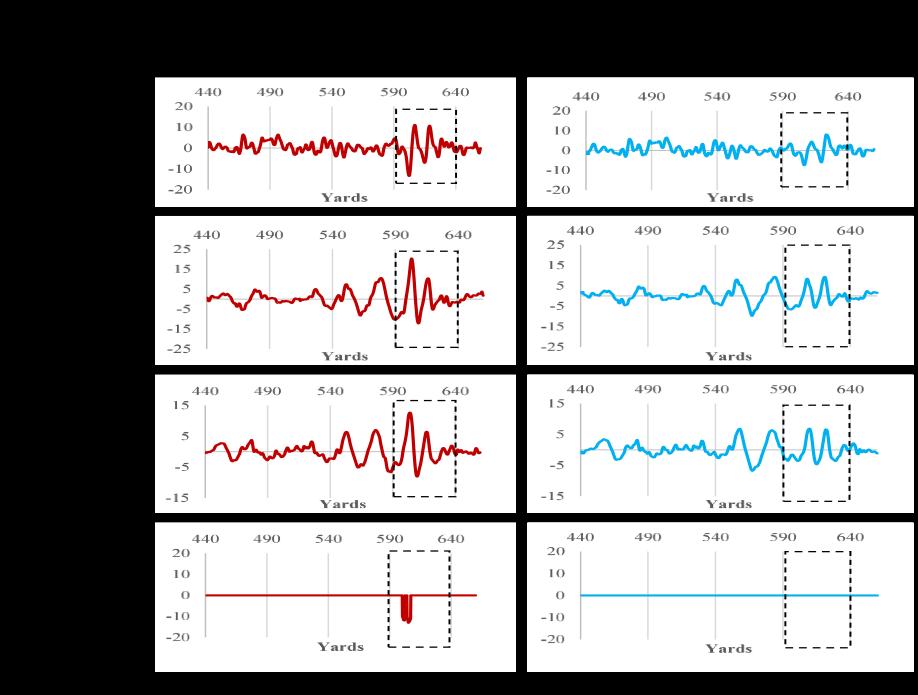
ACKNOWLEDGEMENT
The author would like express his gratitude to Geobear’s leadership team for supporting the publication of this article, and for Network Rail’s East Midlands Route Asset Management team for providing some of the information for the case study.
REFERENCES
Bezgin, O, and M Wehbi. “Advancement and Application of the Bezgin Method to Estimate Effects of Stiffness Variations along Railways on Wheel Forces.” Transportation Research Record: Journal of the Transportation Research Board, 2019: 248-264. Burrow, M, J Shi, M Wehbi, and G Ghatoara. “Assessing the Damaging Effects of Railway Dynamic Axle Loads.” Transportation Research Record: Journal of the Transportation Research Board 2607 (2017): 62-73. Dominijanni, A, and M Manassero. Consolidation of soils with expanding resins design guide. Milan: McGraw-Hill Education, 2014. Institut Dr.-Ing. Gauer. Determination of product properties of URETEK expansion resin samples: cyclic compression tests . Regenstauf: Institut Dr.-Ing. Gauer Ingenieurgesellschaft, 2007. Network Rail. Track Bed Investigation, Design and Installation (NR/ L2/TRK/4239). Standard, London: Network Rail, 2020. Niederbrucker, D. Injection Tests with Geoplus® Resin by Uretek. Austrian Institute of Technology, 2011.










